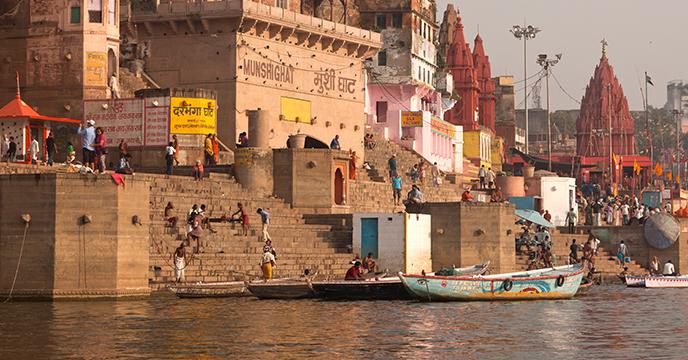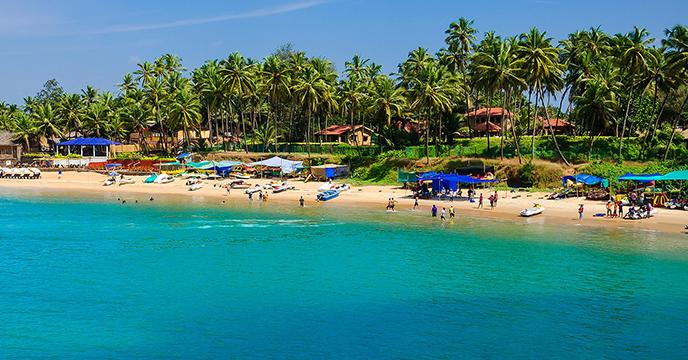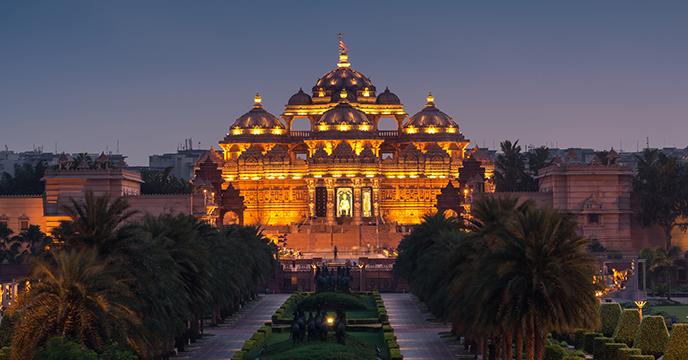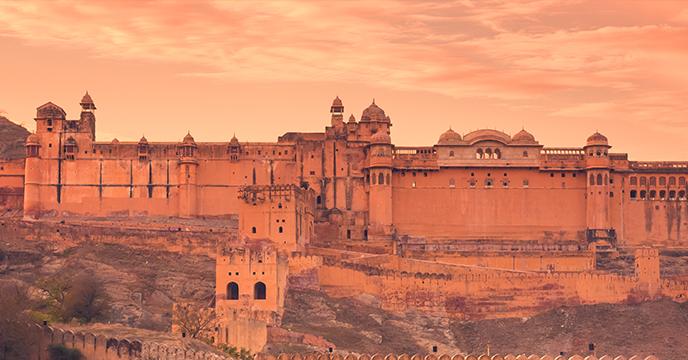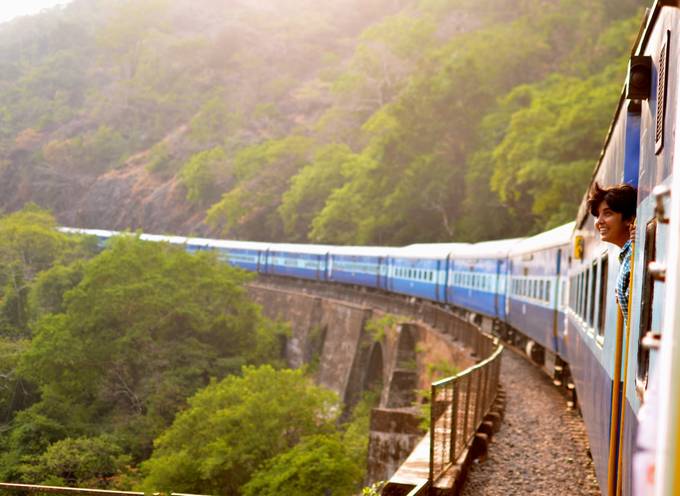
India Travel Guide
A journey to India can most certainly be defined as a life-changing experience. Existing as a destination that will leave you awestruck or enlightened, and maybe even shocked at some points, this bizarre place must really be seen to be believed. Explore majestic temples, treat your eyes to architectural feats and consume as many local dishes as your taste buds can handle.
The Highlights


The Basics
The Location
India is located in the southern part of Asia and shares borders with Afghanistan, Pakistan, Bangladesh, Myanmar, China, Tibet, Nepal and Bhutan. From Dubai to Mumbai, the flight is 3 hours, and from London, it is roughly 9 hours.
Capital City
New Dehli is the capital of India and is situated in the northern part of the country.
Main Airport
Indira Gandhi International Airport in Delhi is the busiest airport based on air traffic and is located in Palam, 16 kilometres from New Delhi.
- Code
- DEL
- Closest City
- New Delhi
Language Spoken
The official language of India is Hindi, however, English is also widely spoken, especially in major cities.
Currency
India uses the Indian Rupee. The currency code is INR. ATMs are available in most towns but make sure you carry some backup cash.
Visas
Almost all citizens will be required to apply for a visa before arriving in India. Many nationalities can apply for a 30-day visa online and some may be able to receive one on arrival.
Electricity
Electrical current is 230V/50hz using type D or type C plugs. The standard voltage in the US is 110 volts, so you may need a surge adaptor.
Vaccinations
Typhoid, Hepatitis A and B and other boosters are advised however not compulsory to enter India. Consult your doctor 6 to 8 weeks before you depart.
Emergency Calls
The phone numbers to call in case of emergency are 100 for the police, 102 for an ambulance and 101 for a fire.
When to Visit

India Tours

Visit Responsibly
Travelling responsibly means respecting the communities, culture and environment of the places you visit. Keep these tips in mind when travelling to India:
Go green. Be environmentally conscious on the road by taking short showers; turning off the lights in your hotel room when you leave; and resisting the urge to collect any plants, seashells, or other natural flora.
Respect cultural differences. Before travelling, read about the local culture and customs – even just knowing the dress code and a few basic phrases in the local language will go a long way.
Support local businesses. Enjoy a more authentic experience and directly support the local economy by travelling with a local guide, eating in local restaurants, buying from local artisans, and staying in locally-owned and operated accommodations.
Wherever possible, avoid single-use plastics. Pack reusable items such as your own shopping bags, utensils, a water bottle, and a straw. These items are typically lightweight and compact, and will greatly reduce your consumption of plastics.
Be conscious of overtourism. Opt to visit the lesser-known regions of India or travel outside the peak season – you'll likely even get a better deal and won't have all the crowds!Sustainable Tourism in India
Ecotourism in India
Now a thriving industry in India, ecotourism has helped preserve the resplendent natural beauty of this country. India boasts a biological park, wildlife sanctuaries, various zoos, tea plantations, vast mountains, and lush forests. A few popular ecotourism activities include hiking, cycling, observing wildlife, and staying in local homestays.
The Green India Awards
Organised by the Green Society of India (GSI), the Green India Awards are held annually to celebrate India’s Green Champions. Anyone striving to create a more sustainable model of eco-friendly living may qualify for this award. This includes individuals, all types of corporations both big and small, and NGOs. The winners of the prestigious award then have the opportunity to serve as role models for others.
India’s Eco-Hotels
World famous for its eco hotels in India, the ITC Hotels group offers luxurious accommodations that are harmonious with the environment. In fact, ITC boasts the largest LEED Platinum certified hotel in the world, the ITC Grand Chola. In addition to using sustainable materials during its construction, this fantastic hotel employs wind farms to provide electricity and solar energy for the majority of its hot water.
FAQs about India
Do you tip in India?
Tipping is not compulsory in India, however, it will always be appreciated if you round up your bill and leave a few extra rupees. Avoid handing out sweets or money to small children as it encourages begging.
What is the internet access like?
Internet connection can range in quality, but you should have no problem with day-to-day tasks like emailing or surfing the web while in India. WiFi is available in many cafes, hostels and hotels for free, but outside urban areas, this is not as common.
Is the tap water safe to drink?
No. Buy bottled water, or you can boil the tap water or use water purification pills.
Can I use my credit cards?
Yes, credit cards are widely accepted throughout India but it's always good to carry a modest amount of cash at all times. Please check with your bank about any foreign transaction charges.
What are the public holidays?
There are many public holidays celebrated in India based on the Islamic, Buddhist, Hindu, Christian celebrations that can vary between regions. National public holidays include Republic Day on January 26, Independence Day on August 15 and Mahatma Gandhi's birthday on October 2.
What are the toilets like?
Be aware that many Indian toilets are squat toilets. There are not many public restrooms outside restaurants and transportation terminals, and sometimes you may be charged to use one. It is a good idea to carry around spare toilet paper.
Is it safe to travel solo in India?
There is no doubt that travellers can safely travel through India solo, but you do need to make sure some extra precautions are taken. Take note of local emergency numbers, carry a portable charger, buy a local sim-card and avoid unfamiliar neighbourhoods to stay safe in India.
Is it safe for female travellers in India?
Of course, females can travel solo, however, there is an even greater need to take caution while travelling through India can be overwhelming at times. If you’re uncertain about a solo venture, you might want to think about joining a group tour for peace of mind.


